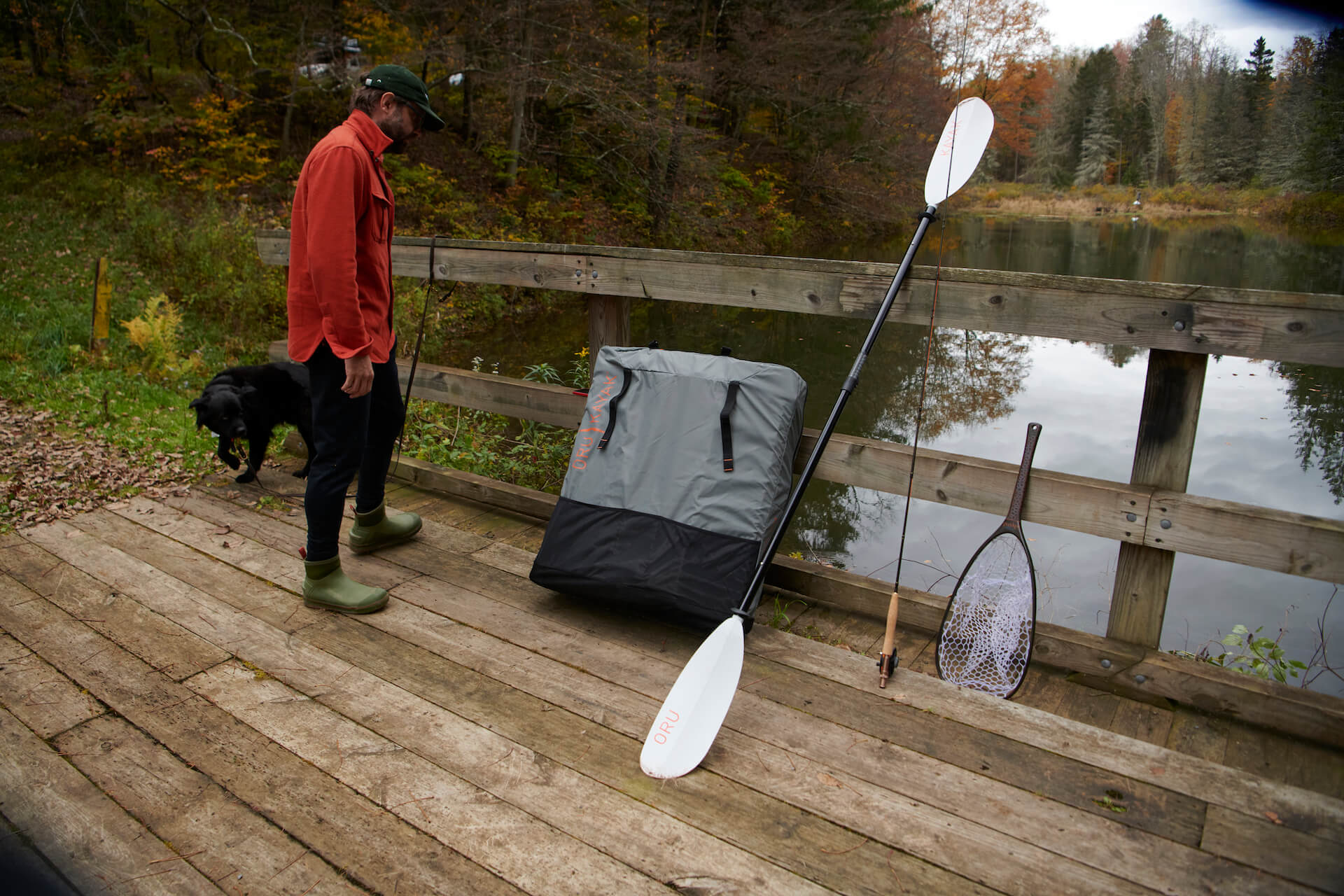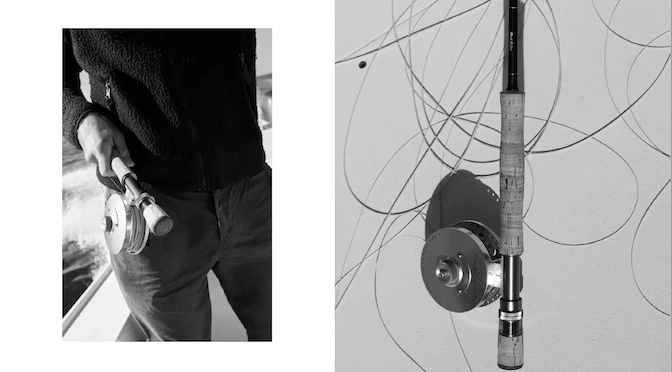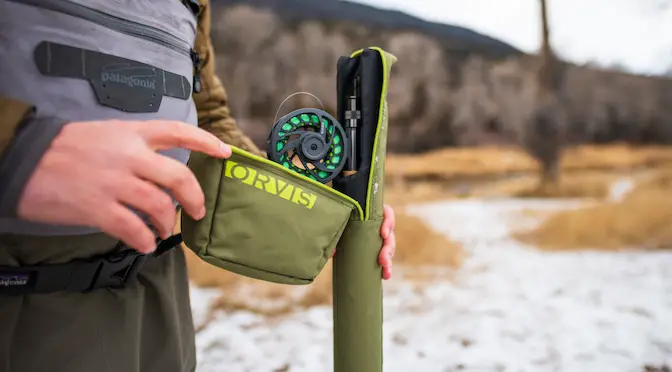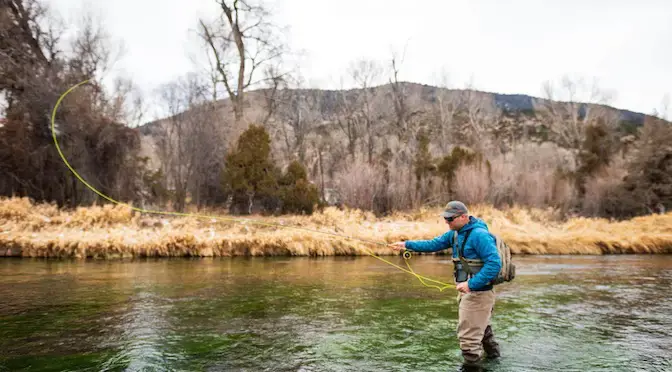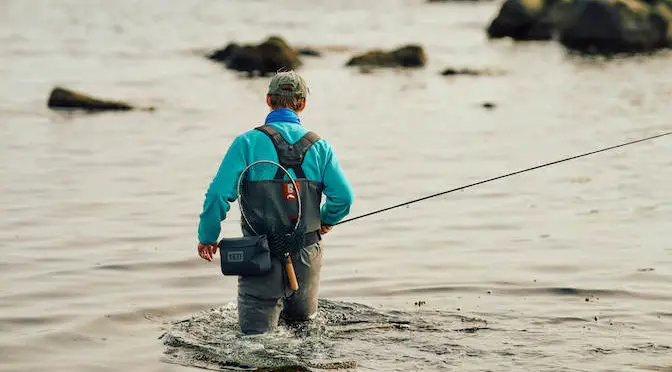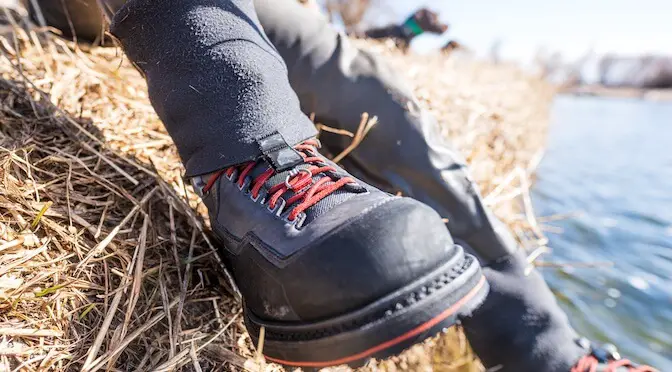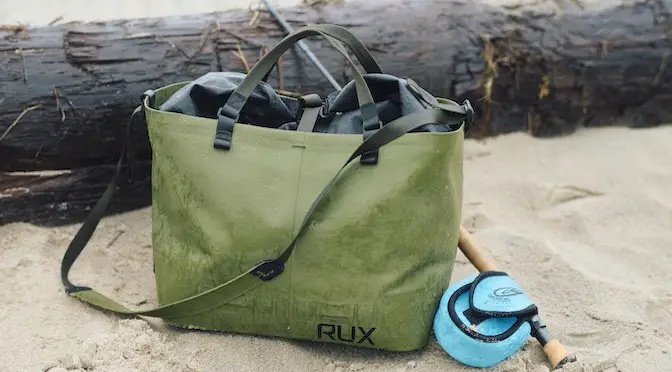- Foldable Freedom: Oru Beach LT Sport Kayak Review - January 18, 2024
- On the Water: Cheeky Sighter Fly Reel Review - January 12, 2024
- Classy Looks: Filson Fishing Guide Vest Review - November 12, 2023
One of the greatest things in fly fishing is exploring new waters. An easy way to do just that is by using a kayak.
The pinnacle of portability is the Oru Beach LT foldable kayak. A few years back most fly fishermen were either fishing from a boat or while wading in a river. But innovations in stand up paddle boards, kayaks and hybrids of these two, have seen more and more fly anglers get out there on these portable watercrafts to explore unknown territory. I admit, it takes some getting used to casting from a somewhat unstable platform but once you’ve figured it out, these boats give you incredible freedom of movement. A trutly unique product in this segment is the Oru kayak that is foldable and hence a great option if you want to bring it along in your car or even on a train.
We got our hands on the Beach LT version which is great for fishing since it provides good stability and you can even bring your dog along. In this review I want to share my experience with this one of a kind origami kayak that promises to be set up and ready in minutes. Without any prior experience in handling and setting up such a kayak, I gave it a try. Here’s how it went.
Note: Some of the links in this article are affiliate links. If you click on one of them and end up purchasing a product we earn a small commission at no extra cost for you. We only recommend products we believe in ourselves and would recommend to our friends and family. Learn more here.
Specs and Features of the Oru Beach LT Sport
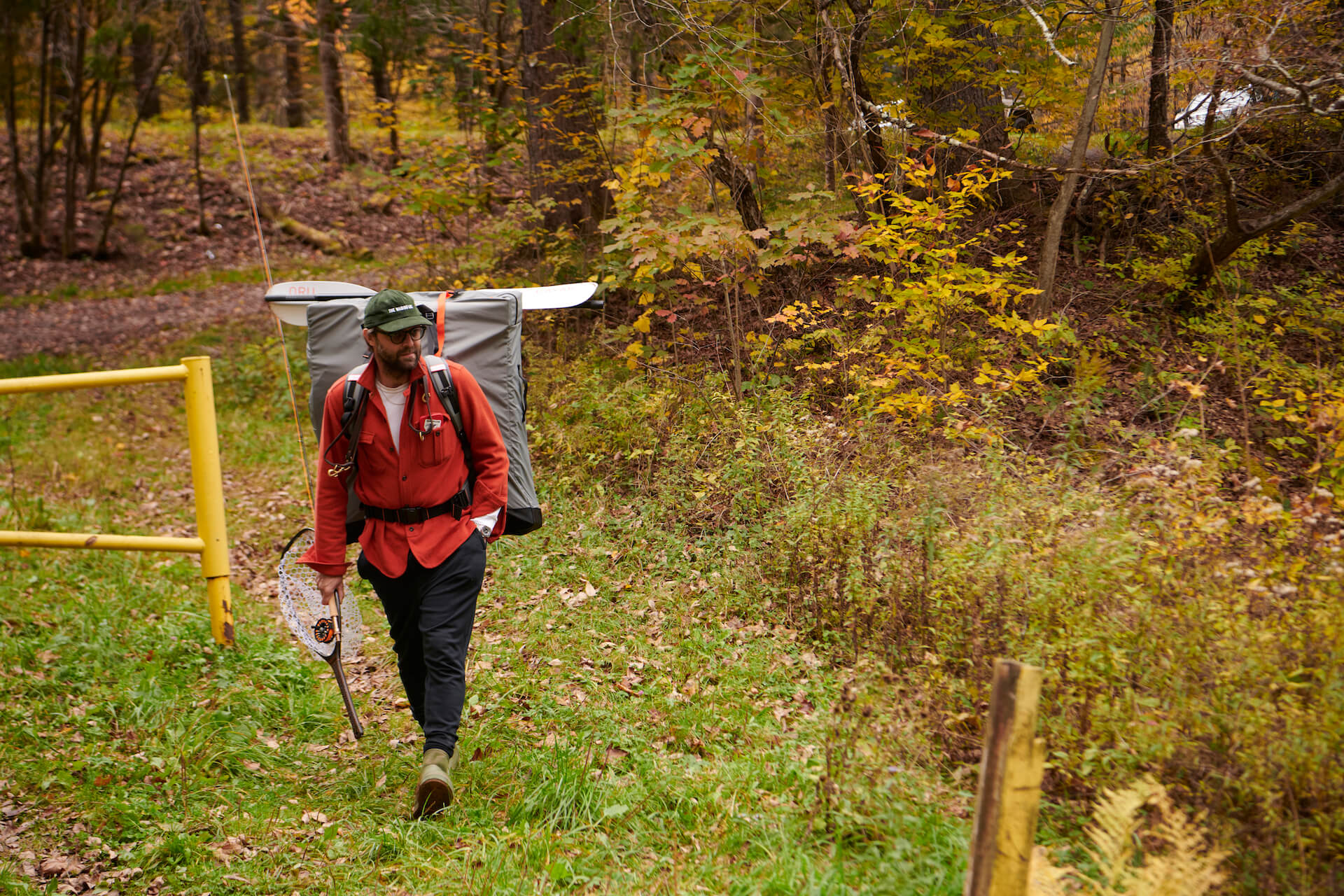
Highlights:
Weight: 28lbs
Max weight limit: 300lbs
Warranty: 3 years
Length: 12’1″
Width: 29″
Set up time: 5 minutes (with some experience) to 15 minutes (for first timers)
Price: $1499
PS: Paddle not included but several bundles available
First Impression
I’m a gear nerd and have to admit that I love creative design and craftsmanship. So when there was a chance to get my hands on an Oru kayak I was excited. I had heard about these foldable kayaks before but wasn’t really sure what to expect in real life. As far as I know there is no other company out there that offers even something remotely similar in terms of portability when it comes to a kayak.
The Oru Beach LT ships in a bag that precisely fits the kayak and can be worn as a backpack. As you can see in the photo above it’s a big bag and at almost 30lbs it’s not exactly light when you carry it around (although 25lbs for the kayak alone is incredibly light for what it is). Still I had no issues carrying it to multiple ponds where I tested the kayak. I probably wouldn’t go on an hour long hike with the Beach LT but it’s no problem carrying it for 10 or 15 minutes.
Setting up the Beach LT Sport

The Oru Beach kayak is meant to be put together and folded up by one person. Although I had no prior experience doing such a thing, it was easy and straightforward. Most steps are self-explanatory and if you struggle, a quick glance at the user manual can solve your problems.
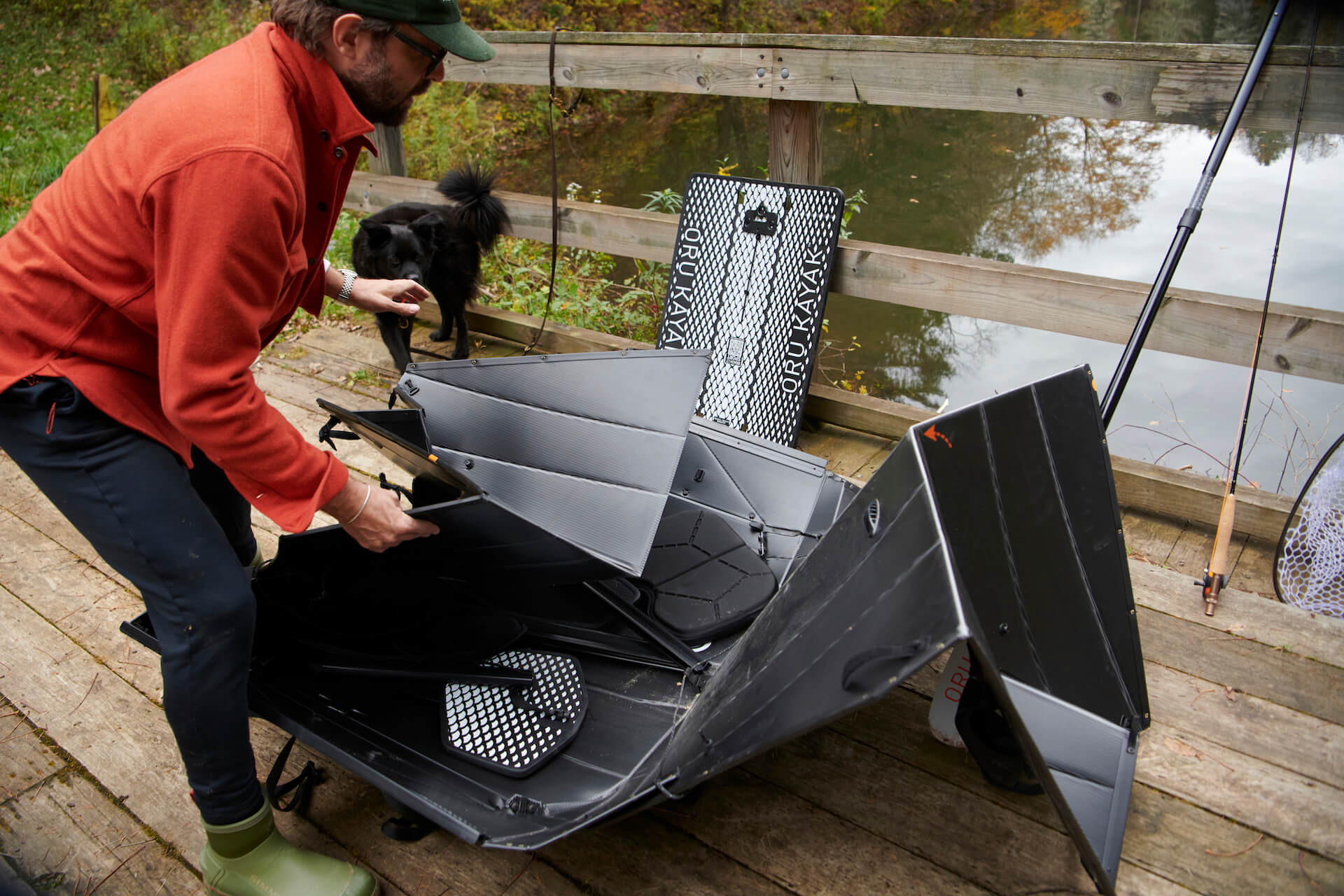
The Oru beach folds out from one main big piece. Make sure to find a spot with some room to maneuver before beginning the setup process. As you can see in the photos, I found a little bridge that served me well. Be careful though since there are some screws (that you need to attach the back rest for example) that might get lost if you’re putting the kayak together on a meadow or a gravel beach.
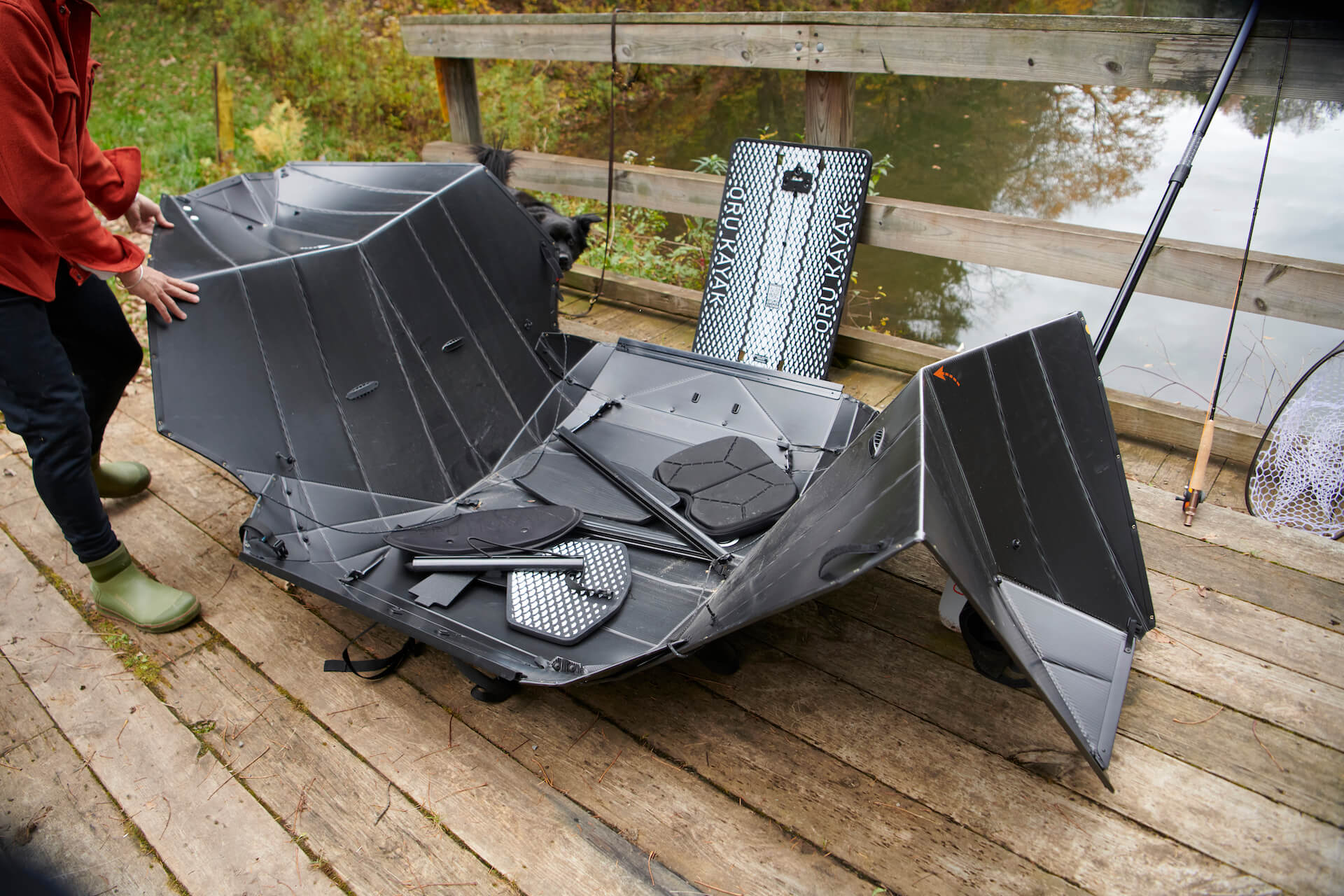
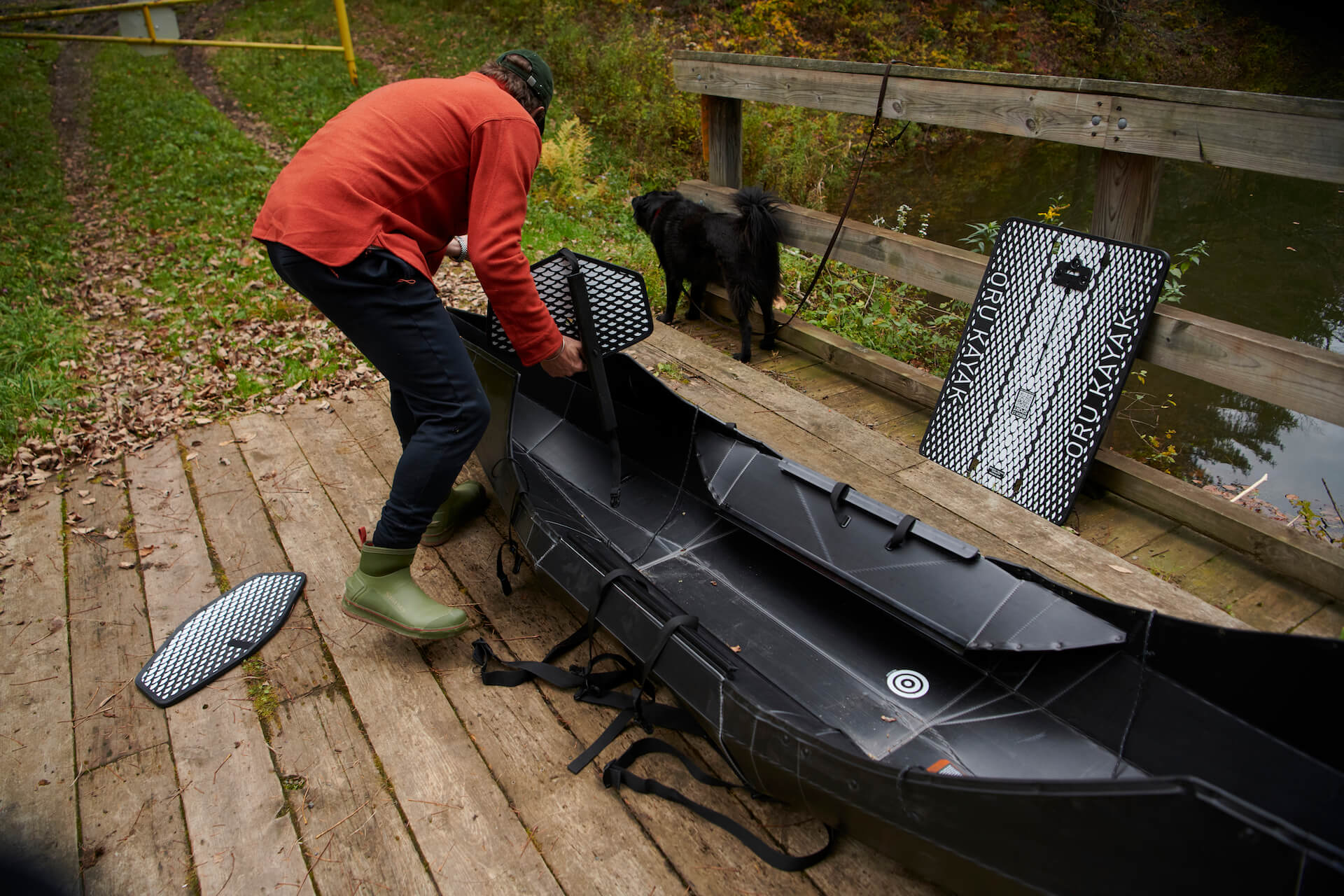
Surprising Stability
When putting the Oru Beach together, although its plastic fabric appears strong and stury, I wondered how such a kayak would be able to provide enough stabilty to cruise around, let alone to fish from. But with each step of the assembly process I could see more clearly how that could in fact work out. The foot rest and back rest add stability to the kayak in the front and in the back. Besides that there are several claps in the bow and the stern of the kayak, that – once closed and tightened – further increase the solidity.
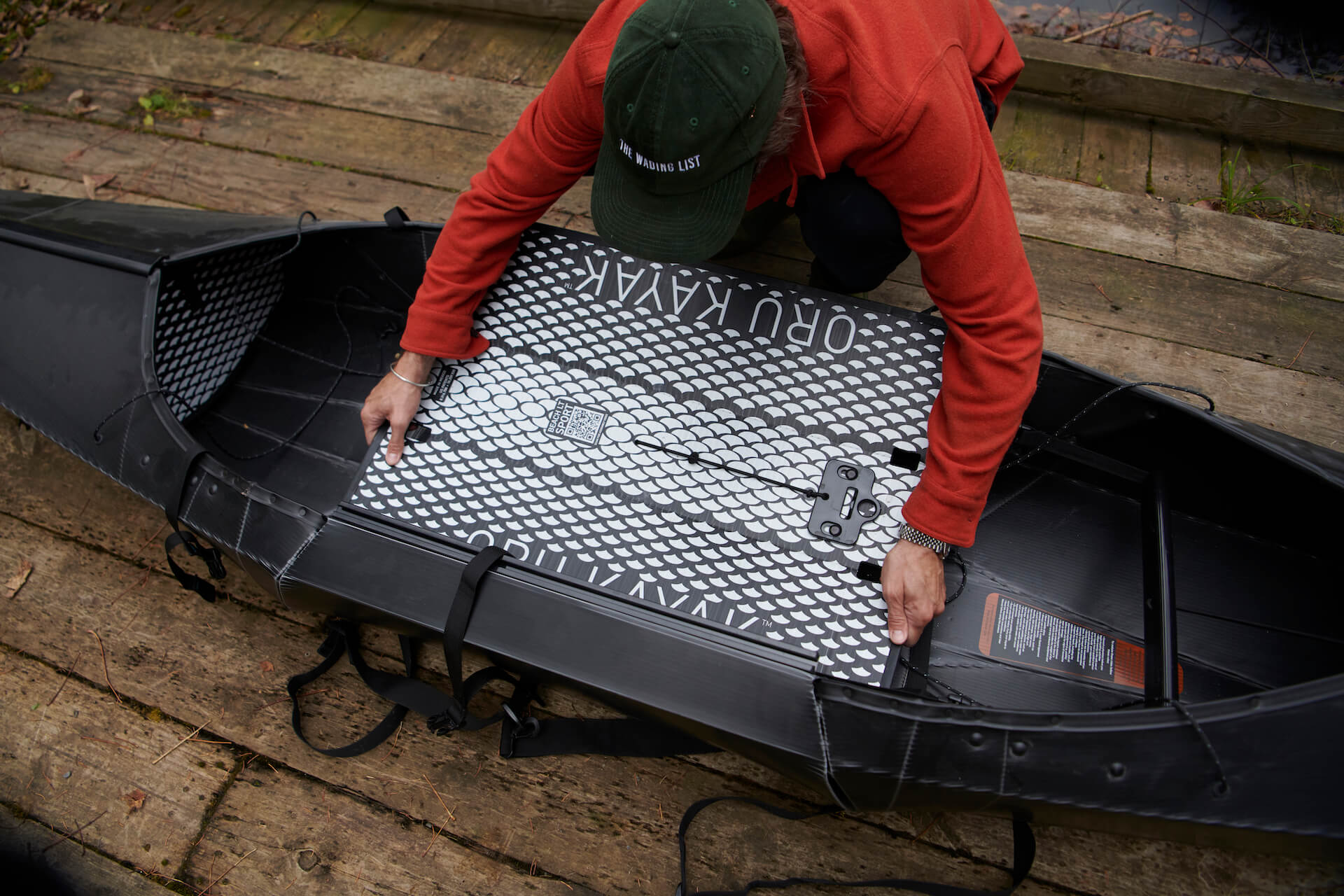
Watering the Kayak
Like I said before, I had no previous experience in putting such a kayak together. Yet, Oru has done a great job at designing the Beach LT as everything is self-explanatory and you also don’t need any force to put the pieces together. Only the screws of the backrest need a little tool to tighten them up. Apart from that no tools are needed, just some (semi) skilled hands. What’s great about the Beach LT is the fact that it offers some space to bring a bit of gear. If you want to use the kayak for (fly) fishing that certainly is essential. I managed to fit two fly rods, a landing net and a big waterproof backpack. I even managed to bring along my dog for a quick ride.
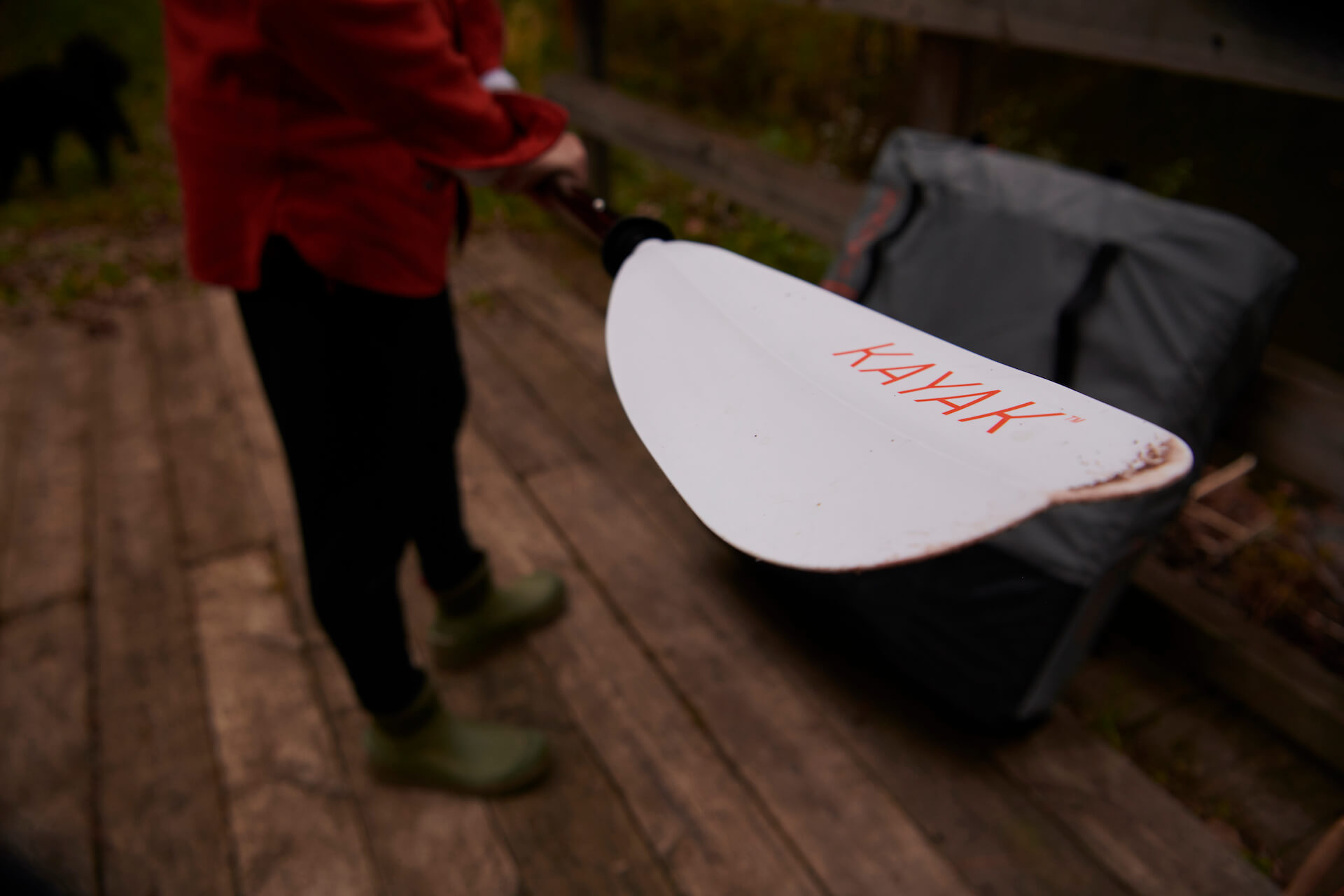
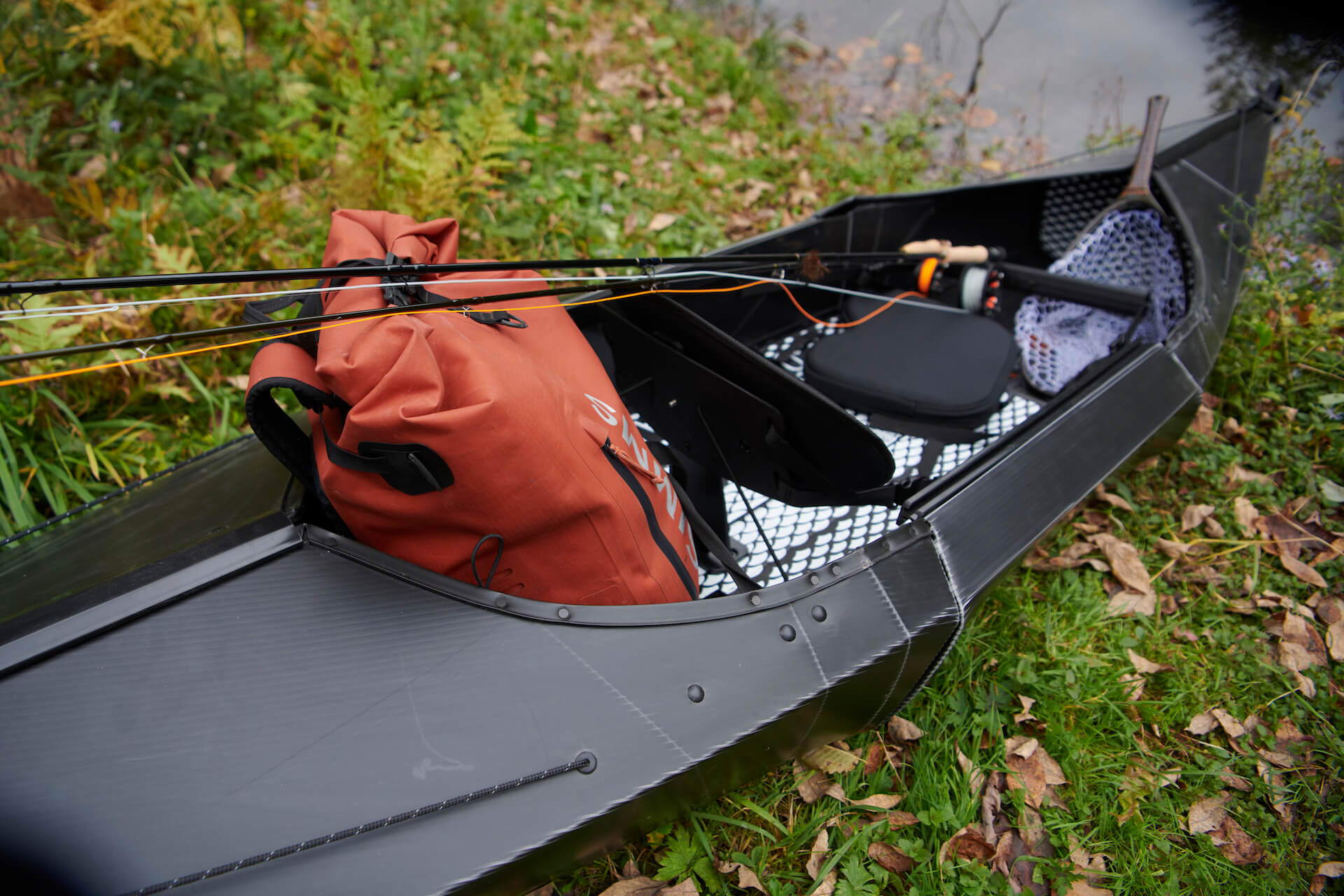
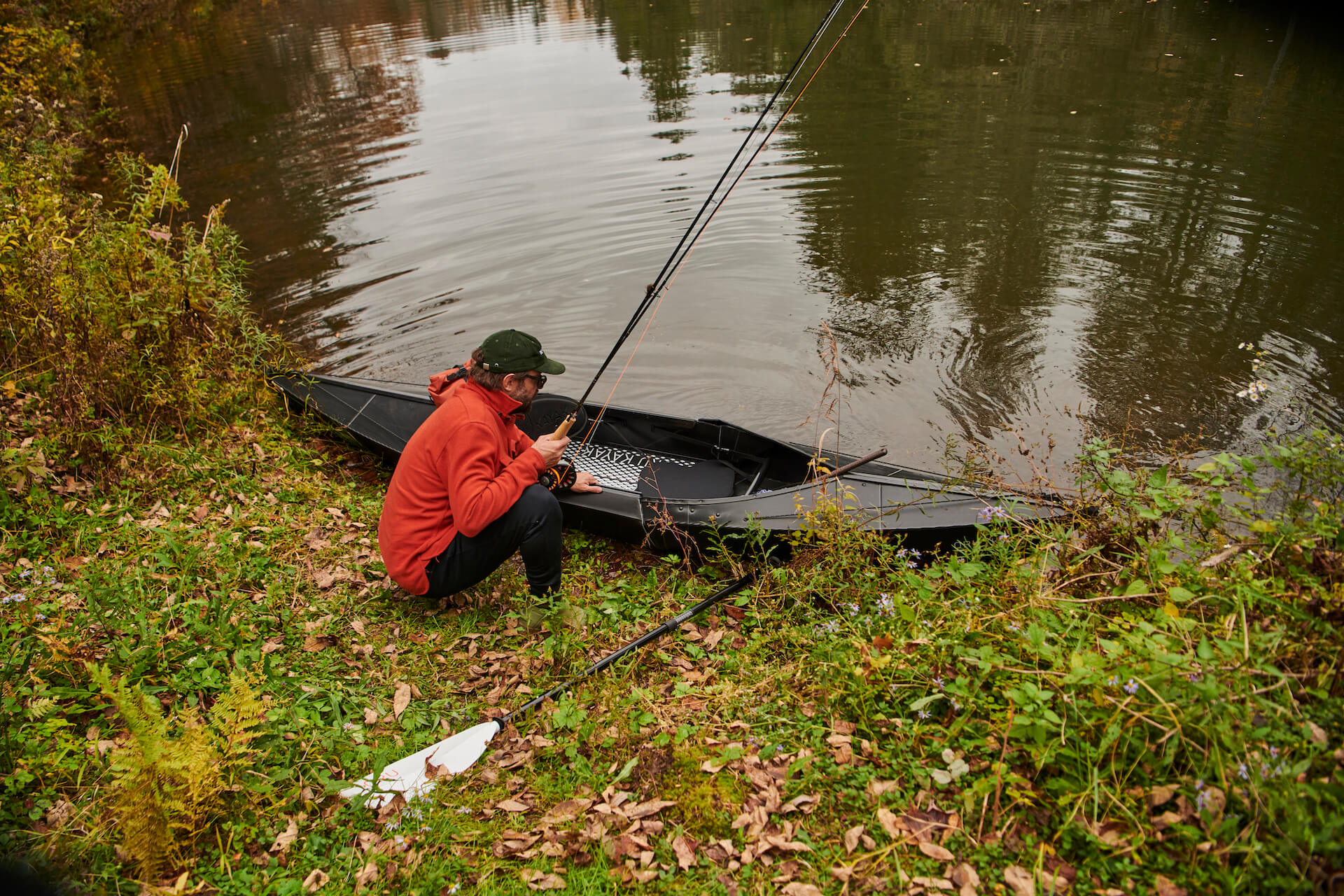
Getting the Oru Beach LT in and out of the water is easy. You can either carry the kayak since it’s rather light or – when you have already loaded some gear into it – you can simply pull it into the water or out of the water. The plastic shell is sturdy and tough and I had no issues even pulling the Oru beach over rocks and gravel beaches. Getting in and out of the boat once it’s in the water takes some balance (as is the case with any kayak from my experience).
Performance on the Water
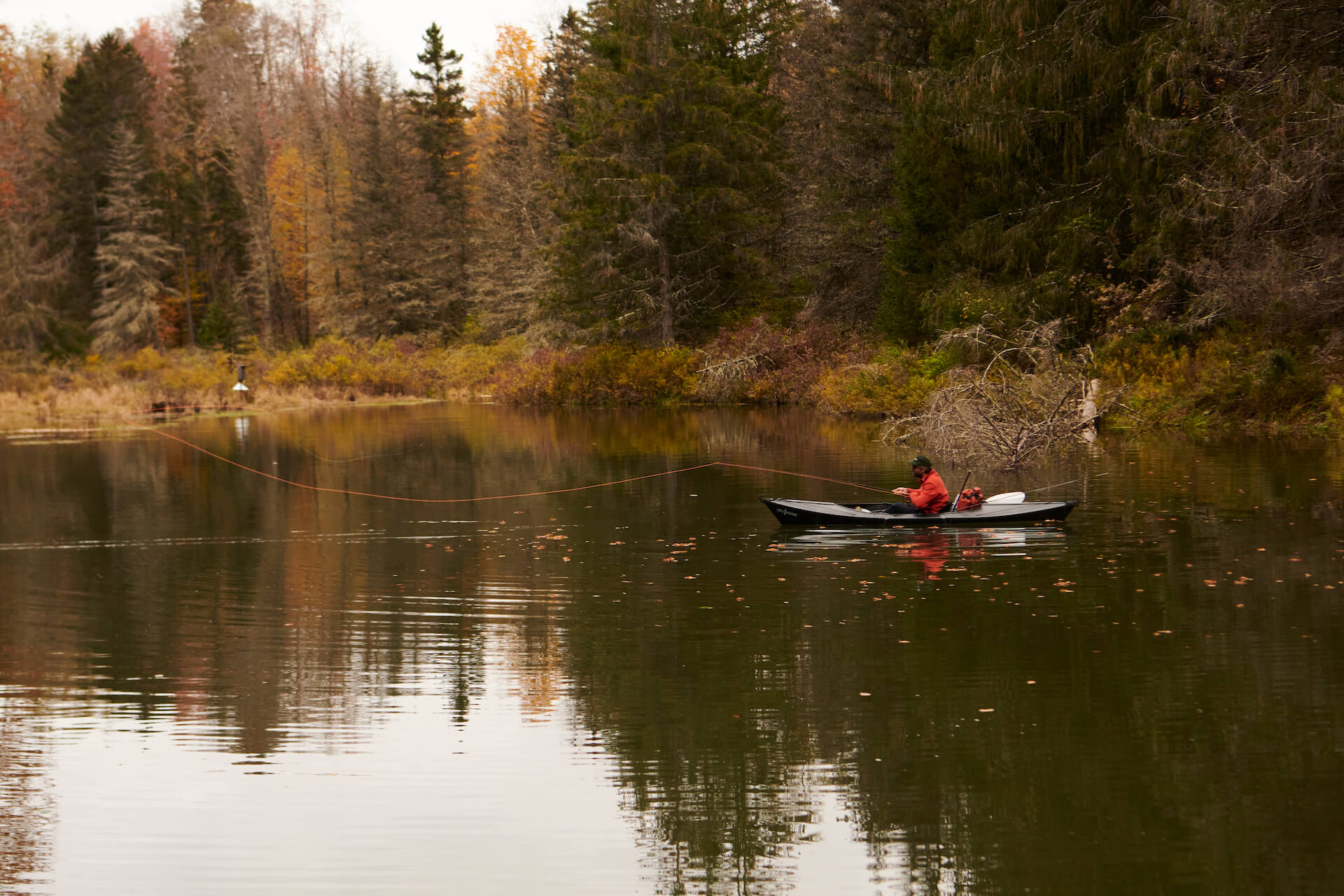
Besides its great portabilty, the feature of the Beach LT I was most curious about, was obvioulsy the question of what it would be like to use this kayak to fish from. First off, let me say that it was a pleasure to get this boat on the water and paddle to one of my favorite spots. I found the Beach LT to be easy to maneuver and it sure is a sporty kayak that is a lot of fun to just cruise around in. Still, my focus was on its performance as a fishing kayak. I found it to provide great stability when casting my fly rod from it. As you can see in the photo above the water was very calm that day which certainly helped me to get some practice in keeping the boat stable while casting. Yet, even when reeling in a catch, the Oru Beach provided good stabilty and I never felt unsafe.
Verdict on the Oru Beach LT
The Oru Beach is a keeper, that’s for sure. The combination of foldability and portability paired with the performance and stability of the kayak, was truly impressive. The only minor downsides I experienced during my testing, was a lost screw of the backrest and the fact that taking the Beach LT apart and getting it back into its bag is certainly more demanding that setting it up. After a long day of kayaking, I can see that being a challenge for older people or females who are not able to come up with the strength to put the kayak back into its carrying bag. Yet, with some experience that should be doable more easily as well. I managed to get it done with some focus.
The price tag of $1,299 is certainly a factor for some people considering getting a (fishing) kayak. On the upside, I don’t think there is any comparable kayak out there offering the overall experience of the Oru. I mean, which other kayak could you take on the subway to get to your favorite spot? The Beach LT also comes with a three year warranty. Overall, I think the Oru Beach is a truly unique product and a fantastic choice if you’re looking for the utmost in portability in a (fishing) kayak.
Frequently Asked Questions: Oru Beach Kayak
What is the Oru Kayak Beach LT?
The Oru Kayak Beach LT is a folding kayak designed for recreational use. It’s portable, lightweight, and can be easily folded into a compact box, making it convenient for transportation and storage.
How durable is the kayak, considering it’s a foldable design?
Despite its foldable nature, the Oru Kayak Beach LT is made from a durable and robust material called polyethylene. This material ensures the kayak maintains its structural integrity, providing a sturdy and reliable watercraft.
How long does it take to assemble the Beach LT for use?
The assembly time for the Oru Kayak Beach LT is relatively quick. On average, it takes around 5-10 minutes to unfold and set up the kayak, allowing users to spend more time on the water and less time on preparation.
Is the Oru Kayak suitable for beginners, or is it better for experienced kayakers?
The Oru Kayak Beach LT is designed with simplicity in mind, making it suitable for both beginners and experienced kayakers. Its stability and ease of assembly make it a great choice for those new to kayaking.
Can the Oru Kayak Beach LT handle different types of water, such as rivers, lakes, and oceans?
Yes, the Oru Kayak Beach LT is versatile and can handle various water conditions, including calm lakes, rivers, and coastal waters. However, it’s always essential to consider individual skill levels and adhere to safety guidelines for specific water environments.

